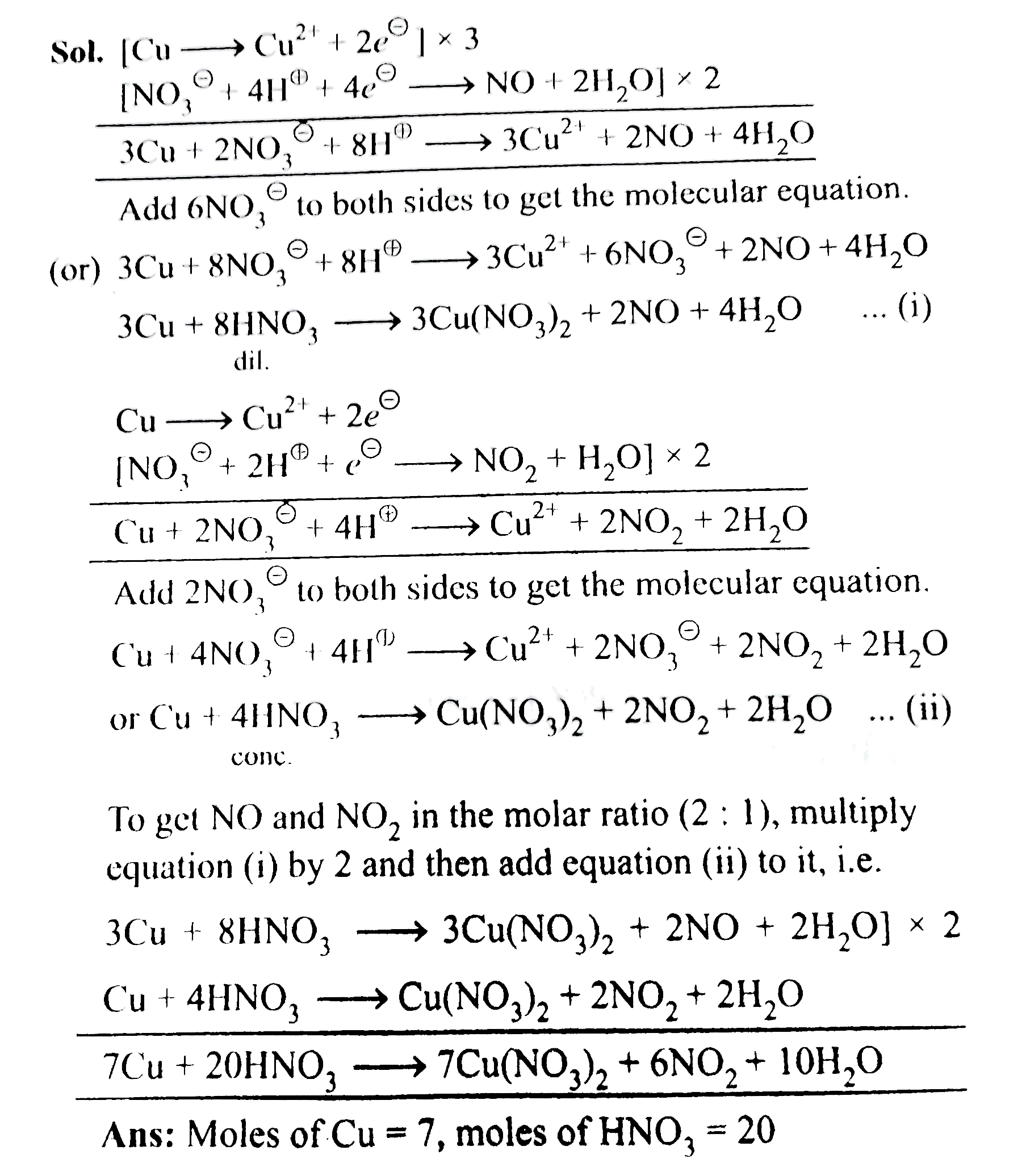Calculate the number of moles of Cu and HNO3 to give NO and NO2 in the (2:1) molar ratio.
Video Solution
Text Solution
 .
.
|
Updated on:21/07/2023
Topper's Solved these Questions
- BOOK - CENGAGE CHEMISTRYCHAPTER - P-BLOCK GROUP 15 ELEMENTS - THE NITROGEN FAMILYEXERCISE - Solved Example7videos
P-BLOCK GROUP 15 ELEMENTS - THE NITROGEN FAMILY
- BOOK - CENGAGE CHEMISTRYCHAPTER - P-BLOCK GROUP 15 ELEMENTS - THE NITROGEN FAMILYEXERCISE - Concept Application Exercises 2.1 (Subjective)22videos
P-BLOCK GROUP 15 ELEMENTS - THE NITROGEN FAMILY
- BOOK - CENGAGE CHEMISTRYCHAPTER - ORGANIC COMPOUNDS WITH FUNCTIONAL GROUPEXERCISE - Archives Analytical And Descriptive24videos
ORGANIC COMPOUNDS WITH FUNCTIONAL GROUP
- BOOK - CENGAGE CHEMISTRYCHAPTER - P-BLOCK GROUP 16 ELEMENTS - THE OXYGEN FAMILYEXERCISE - Archives Subjective10videos
P-BLOCK GROUP 16 ELEMENTS - THE OXYGEN FAMILY
Similar Questions
Knowledge Check
- Question 1 - Select One
calculate number of moles of HNO3 in 126 amu of HNO3?
A2NAB2C1D1NA - Question 2 - Select One
What is the number of moles of O-atom in 126 amu of HNO3 ?
A2B2NAC6D6NA - Question 3 - Select One
The ratio of the number of moles of AgNO3,Pb(NO3)2andFe(NO3)3 required for coagulation of a definite amount of a colloidal sol of silver iodide prepared by mixing AgNO3 with excess of KI will be
A1:2:3B3:2:1C6:3:2D2:3:6
Balance the following redox reactions by the oxidation number method:
Cu+HNO3→Cu(NO3)2+NO2+H2OView SolutionCalculate the number of moles of ammonia required to produce 2.5 moles of [Cu(NH3)4]SO4.
View SolutionZn+HNO3=Zn(NO3)2+N2O+H2O
View SolutionFeSO4 solution mixed with (NH4)2SO4 solution is 1:1 molar ratio gives the test of Fe2+ ion but CuSO4 solution mixed with aqueous ammonia in 1:4 molar ratio does not give the test of Cu2+ ion. Explain why?
View SolutionR3N reacts with HNO2 to give
View Solution

